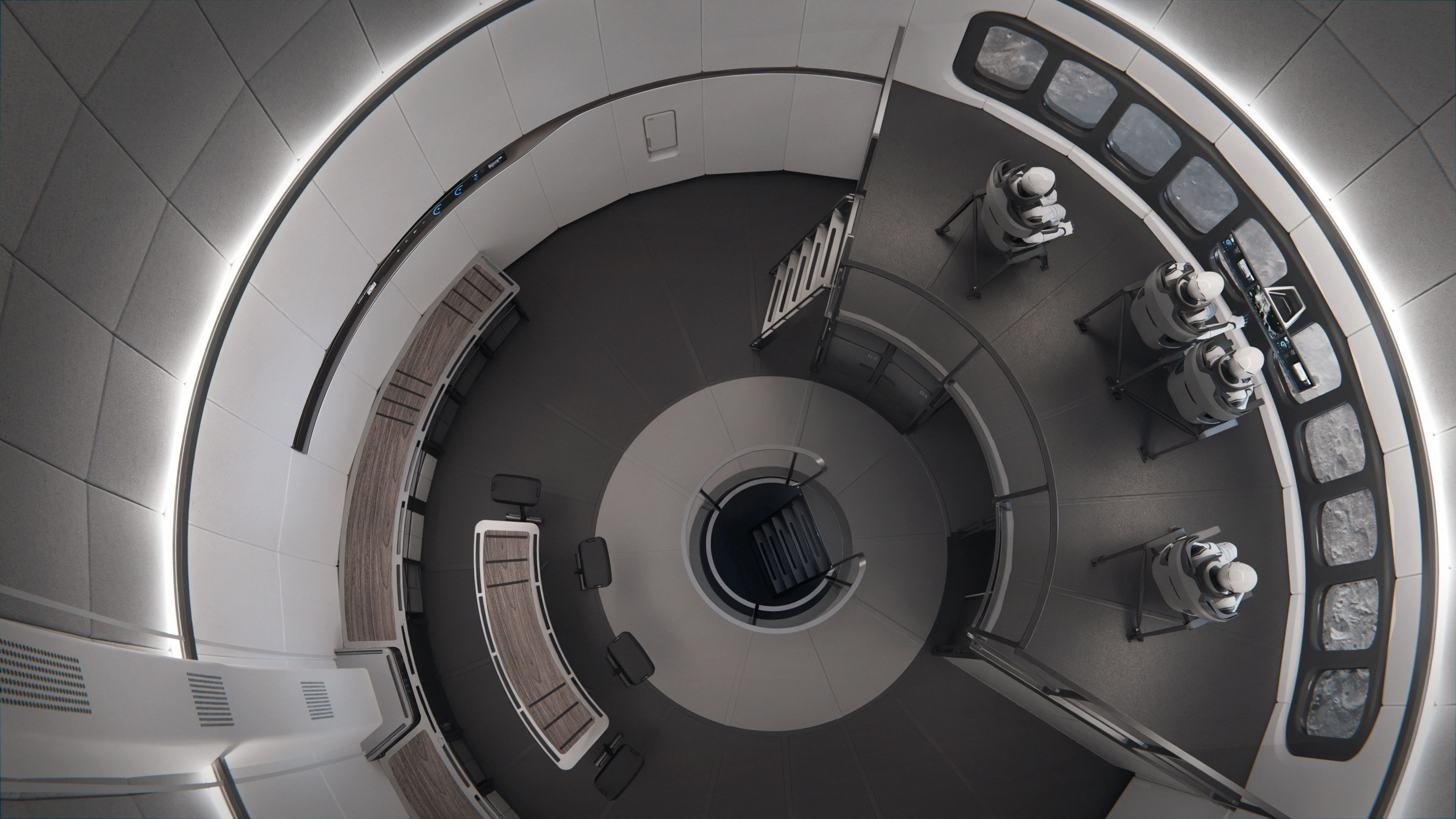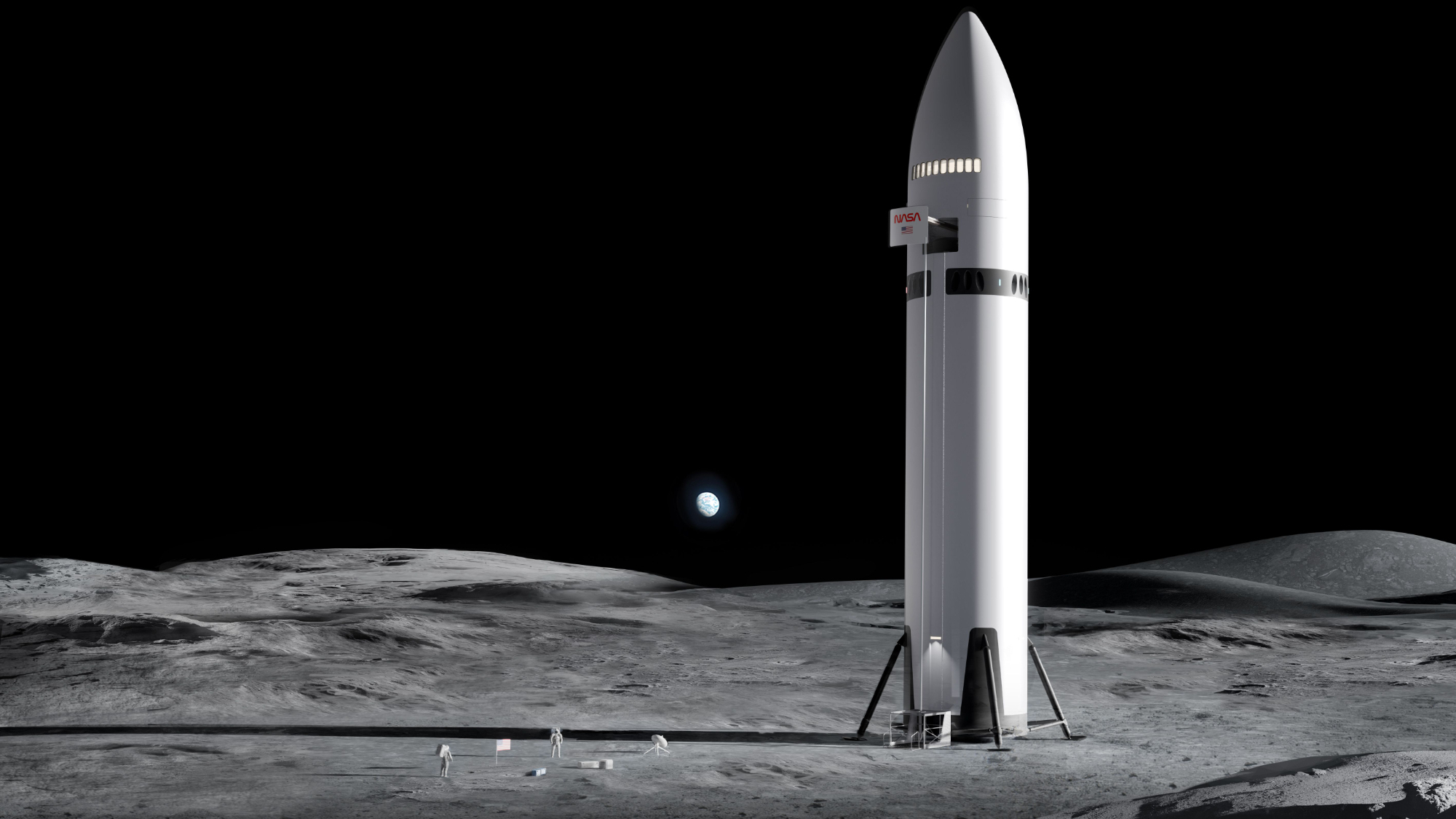SpaceX may be rethinking its moon-landing plans.
The company holds a contract to put NASA astronauts down near the lunar south pole on the Artemis 3 mission, which is expected to launch in 2028, if all goes according to plan. SpaceX will use a modified upper stage of its Starship megarocket — the biggest and most powerful launcher ever built — for this very high-profile job.
"I love SpaceX; it's an amazing company. The problem is, they're behind. They've pushed their timelines out, and we're in a race against China," Duffy said on Oct. 20 during an appearance on CNBC's "Squawk Box." (China plans to land astronauts on the moon by 2030 and has been making steady progress toward this goal.)
This announcement did not sit well with SpaceX founder and CEO Elon Musk. He attacked Duffy via social media repeatedly over the following few days, calling the acting NASA chief "Sean Dummy" and claiming that he "is trying to kill NASA."
Now, more than a week later, SpaceX has formulated a more substantive response. On Thursday (Oct. 30), the company posted an update called "To the Moon and Beyond," which summarizes the progress that SpaceX has made with Starship to date and lays out the vehicle's potential to make NASA's lunar ambitions a reality.
"Starship provides unmatched capability to explore the moon, thanks to its large size and ability to refill propellant in space," the blog post reads. "One single Starship has a pressurized habitable volume of more than 600 cubic meters, which is roughly two-thirds the pressurized volume of the entire International Space Station, and is complete with a cabin that can be scaled for large numbers of explorers and dual airlocks for surface exploration."
SpaceX stressed in the update that it's working in parallel along two Starship paths, developing the "core" megarocket (which will help humanity colonize Mars, among other tasks) as well as the Artemis-specific moon-lander upper stage. SpaceX is self-funding the core path, and its contract for the Artemis lander is of the fixed-price variety, "ensuring that the company is only paid after the successful completion of progress milestones, and American taxpayers are not on the hook for increased SpaceX costs," the company wrote.
According to Thursday's update, SpaceX has already completed 49 such milestones for the Artemis lander, including testing of micrometeoroid and space debris shielding and demonstrations of "lunar environmental control and life support and thermal control" systems. And the company plans to make even more progress soon, sending a Starship upper stage to Earth orbit and completing an in-space fueling test with the vehicle in 2026, if all goes to plan.
SpaceX affirmed in the blog post that it shares NASA's goal to return astronauts to the moon "as expeditiously as possible" and wants to be "a core enabler" of the Artemis program's overriding ambition — to establish a permanent and sustained human presence on the moon, rather than mount a flags-and-footprints retread of Apollo. And the company said it's willing to be flexible to help make all of this happen.

"Since the contract was awarded, we have been consistently responsive to NASA as requirements for Artemis 3 have changed and have shared ideas on how to simplify the mission to align with national priorities," reads the update, which also features a new render of the interior of a crewed Starship moon lander. "In response to the latest calls, we’ve shared and are formally assessing a simplified mission architecture and concept of operations that we believe will result in a faster return to the moon while simultaneously improving crew safety."
The current Artemis 3 plan calls for its four astronauts to lift off atop a NASA Space Launch System rocket, then ride an Orion capsule to lunar orbit, where they'll meet up with the Starship upper stage. The astronauts will move into Starship, which will take them to and from the lunar surface.
SpaceX's new blog post doesn't provide any details about the possible "simplified" Artemis 3 architecture. But Musk may have given us a clue on Oct. 20, in one of his many Duffy reaction posts. "SpaceX is moving like lightning compared to the rest of the space industry," the billionaire wrote. "Moreover, Starship will end up doing the whole moon mission. Mark my words."

.jpg) 8 hours ago
2
8 hours ago
2

 English (US)
English (US)